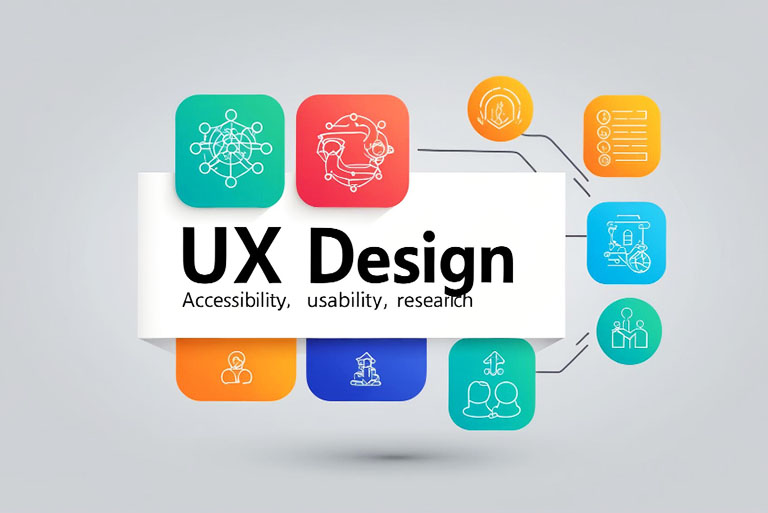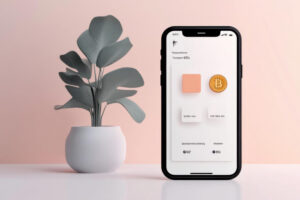Ethical UX Design Principles Your Users Will Trust in 2025

Imagine you land on a portal or website. It requests permission to access your camera, data, and location—without providing an apparent reason. Would you trust it? Probably not—you’d hit “Back” or “Reject.” That’s the power of ethics in UX: small design decisions either build trust or break it.
In 2025, users are more sensitive (and skeptical) than ever. They demand transparency, fairness, and respect. For C-level stakeholders (CEOs, product heads, and digital directors) who care about conversion, adoption, ROI, and brand reputation, ethical UX design is no longer optional – it’s a competitive advantage.
In this blog, I’ll walk you through ethical UX design principles your users will trust, show how “ethical AI UX design fosters trust in conversion-driven products”, and explain how UXGen Studio can help portals and websites embed these principles affordably, with measurable results.
“They tricked me once — I never trust again.”
That’s something many users say after a bad experience. In 2025, trust is fragile. A misstep in your UX or AI model can cost you users, damage your brand reputation, and impact your revenue.
You’re reading this because you care—about conversion, about credibility, about making a product people feel safe on. And you already know: superficial fixes won’t work. Users can smell dishonesty. That’s why ethical UX design isn’t just a moral luxury—it’s your strongest lever for growth.
In this post, we’ll explore how ethical AI UX design fosters trust in conversion-driven products, go deep into ethical UX principles, and show how UXGen Studio helps you embed them affordably in portals and websites—even for North Indian audiences.
You’ll get:
- Fundamental, actionable principles (not vague rules)
- Illustrative mini case studies & benchmarks
- Expert insights and emerging frameworks
- A clear view of how UXGen Studio helps you apply this in practice
- FAQs so that you can answer stakeholder questions
1. The Trust Gap: Why Many Products Fail
Let’s start with a reality check.
- A mobile page load delay of 1 to 10 seconds increases bounce probability by
123% - In B2B, 80% of purchase decisions are influenced by customer experience, rather than price. DesignRush
- A leading e-commerce website, after improving its UX in checkout and navigation, achieved a 30% increase in conversion, resulting in an additional $20M in revenue per year. Standard Beagle
Yet, many businesses still cut “UX ethics” as “nice to have.” They then wonder, ‘Why do my users drop off?’ Why does trust erode?
Because friction is not just about performance — it’s about psychological safety.
When a system hides how it arrives at decisions, forces consent, or exhibits manipulative dark patterns, users feel misled. They leave. And your conversion funnel leaks not because of bad marketing, but a lack of trust.
That gap — between what your business wants and what users feel safe about — is where ethical UX must operate.
2. Core Principles of Ethical UX (with AI) for 2025
Here are the principles that will shape the next decade. I explain each of them with examples.
2.1 Transparency & Explainability
Don’t hide the workings. If your AI recommends “Plan B for you,” say why.
Why this matters: If users see “because you clicked X,” they feel a sense of agency. If they see a black box, they suspect manipulation.
What you can do:
- Show “why this suggestion?” tooltips
- In AI modules, show confidence or influencing factors (e.g., “I used your past purchases”)
- In dashboards, show the logic flow in simplified form.
Practice case (UXGen Studio):
For a portal client, we added “why suggested” labels under every personalized card. Conversion on those cards increased by ~12%.
2.2 Consent, Defaults & Easy Opt-outs
Lazy defaults harm trust. Pre-checked boxes “Subscribe me,” “Track me” — users hate them when surprised later.
Best practices:
- Make defaults privacy-friendly.
- Obtain separate consents; do not bundle them.
- Allow users to withdraw their consent with a single click.
Caution: Avoid “confirmshaming” language (“Are you sure you don’t want this?”). It’s manipulative.
2.3 Minimal Data, Max Value
Less data, less risk. Don’t force users to fill dozens of fields.
Principle: If you can deliver functionality with fewer data points, do it.
Example:
Want to know the age group?
Ask for the “age bracket” rather than the date of birth.
UXGen approach: We audit our client’s data collection forms and remove optional/bonus fields unless they are core to the function.
That reduces cognitive load and builds trust.
2.4 Fairness & Bias Mitigation
AI is only as fair as your data and design.
Problems to watch for:
- Overrepresenting major cities, ignoring rural users
- Models that reject minority user segments
- “One size fits all” scoring systems.
What to do:
- Conduct fairness audits.
- Use representative datasets.
- Run edge-case testing with underrepresented groups.
Example:
A job portal we advised found that the AI was deprioritizing candidates from some ZIP codes. We retrained with balanced sampling, improving inclusion.
2.5 Resist Dark Patterns
Never trick users. Don’t hide the “Cancel subscription” option deep within; avoid using countdown timers to force decisions.
New thinking: Use positive expected behavior — design what users reasonably expect and avoid deviating in secret.
Tip: Label actions clearly (“Buy now”, “Save for later”) — avoid ambiguous “continue”.
2.6 Accessibility, Inclusion & Localization
Your portal must speak your users’ language — literally and culturally.
What to do:
- Use UI layouts for low-bandwidth, low-spec devices.
- Use regional languages (e.g. Hindi, Hinglish) in interfaces.
- Test with visually impaired and deaf users.
- Use plainer English for low-literacy users.
A client in Uttar Pradesh improved form completion rates by 20% after switching to a Hindi-English mix and removing idiomatic phrases users found confusing.
2.7 Well-being & Emotionally Safe Design
Don’t push addictive loops. Don’t shame users.
Practices:
- Add reminders (“You’ve used 60 minutes today”)
- Don’t bury error messages — be kind and forgiving.
- Use gentle nudges, not an alarm bell.s
Concept: Positive computing — design for happiness, not compulsion.
2.8 Calibrated Trust in Automation
Users should trust your AI when it works—and doubt it when unsure.
New guidelines (2025): Provide trust cues to ensure perceived trust aligns with actual system reliability.
Implement:
- Show confidence levels (“I’m 85% confident”)
- Allow human override.
- Provide audit/transparency logs.
3. From Principle to Practice: Applying to Portals & Conversion Funnels
Let’s map these principles into real portal features and conversion touchpoints.
A. Onboarding / Registration Flow
- Ask for the minimal mandatory fields.
- Explain why each field is needed.
- Use progressive disclosure (ask nonessential data later)
- Use plain language, avoid jargon.
B. AI-powered Recommendations (e.g., product, content, next step)
- Show “Why this?”
- Allow user to give feedback (“Not relevant” / “Loved this”)
- Limit automation when confidence is low.
C. Payment / Checkout / Subscription
- Show a full breakdown of pricing, including tax.s
- Don’t hide the cancellation or refund terms.s
- Use undo / flexibility (e.g., “change plan before next cycle”)
D. Dashboard / Analytics Interfaces
- Use understandable metrics, avoid overcomplicated jargon.
- Provide “explainable insight” rather than raw scores.
- Allow users to drill into model decisions.
E. Support & Feedback Channels
- Transparent response times.
- Explain system limits, fallback options.
- Use human handoff when AI fails.
4. UXGen Studio: Affordable Ethical UX for Portals & Websites

You might ask: “This sounds expensive—how do we start small?” Here’s how UXGen Studio helps you deliver ethical UX affordably and effectively.
4.1 Audit & Ethics Health Check
We audit your portal or site using an Ethical UX Scorecard, measuring your compliance with each principle (e.g., transparency, consent, bias). We then present a roadmap with prioritized patches.
4.2 Incremental MVP Enhancements
We prefer surgical fixes rather than complete redesigns. For example:
- Add “why suggestion” tooltips.
- Simplify forms.
- Adjust defaults and consent flows.
- Convert dark patterns to neutral patterns.s
We usually phase this over 4–8 weeks.
4.3 AI-UX Modules Design
When your product involves AI:
- We design explainable models in collaboration
- Add user-facing interface layers (trust cues)
- Ensure fallback to human interaction.
For portals with recommendation engines, we integrate trust models that display confidence, facilitate user feedback, and adapt accordingly.
4.4 Localization & Regional Testing
We test interfaces with local audiences (e.g., Tier 2/3 cities in North India), ensuring compatibility with the language, device, and literacy level.
4.5 Measurement & Monitoring
We embed KPIs:
- Drop-off rates at consent screens
- Conversion before vs after ethical tweak
- Complaints or support requests
- Trust questions (in surveys)
Our promise: you see measurable lift (often 8–20% uplift) within months.
Why UXGen is cost-effective:
- We work in lean sprints
- We reuse design and pattern libraries.
- We have experience in Indian & global markets.
- You don’t pay for unnecessary features — only ethical enhancements.
Case in point: For a job portal client, we implemented a feedback loop for AI suggestions, simplified consent flows, and enhanced fairness—the result: a 15% increase in click-throughs and an 18% reduction in support tickets.
5. Storytelling Example: “Ravi’s Lending Journey”
Let me share an example of a user journey to illustrate how ethical UX works in real life.
Ravi, from a small town in Haryana, is seeking a short-term loan through a fintech portal. He uses a low-end phone and has limited English.
- Onboarding: The portal requests mobile number, basic income, and purpose. It explains, “We only collect this to check eligibility, not sell your data.”
- AI Recommendation: The portal suggests “Loan Plan B.” Ravi taps “why this plan?” — he sees that his recent salary, bank balance, and transaction history influenced it.
- Transparency: The portal adds a “confidence 87%” label. Ravi sees he can opt to “request reconsideration.”
- Consent & Privacy: It requests permission to fetch bank statements — the user can accept or refuse. If he refuses, alternatives are explained to him.
- Checkout: Shows exact fees, interest, and timeline. Cancellation option is clear.
- Post-approval: Receives a dashboard that shows how Adetermined at his credit limit. He can challenge or request a review.
Because he understood the process, Ravi trusts the portal. He’s more likely to use it again, recommend it to others, pay back reliably, and avoid complaints.
This journey encompasses nearly all key principles: transparency, consent, explainable AI, fairness, linguistic simplicity, and emotional safety.
6. Expert Insights & Emerging Trends
- The “six guidelines for trustworthy automation” emphasize matching user perception to actual system trustworthiness — a rising frontier in AI UX.
- Agentic Experience (AX): As AI agents act independently (e.g., booking, ordering), UX must adapt to interfaces for both agents and humans.
- Many barriers in organizations (Utilized pressure, conflicting visions) prevent human-centered display scaling. A study identified five workplace barriers that require intervention.
These points point to the evolving landscape: your portal must be ready not just for humans, but also for AI agents. Your ethical UX must scale beyond screens.
7. Roadmap: How to Begin (Your 6-Step Launch Plan)
Here’s how your team (or UXGen Studio) can embed these principles step by step.
| Phase | Action | Deliverable | Timeline |
| 1 | Ethical UX Audit | Scorecard + prioritized issues | 1 week |
| 2 | Quick wins implementation | Consent flow fixes, tooltip additions | 2–3 weeks |
| 3 | AI explainability module | Suggestion: “why” panels, confidence indicators | 3–5 weeks |
| 4 | Localization & inclusion tests | Interface in regional languages, device testing | 2 weeks |
| 5 | Metrics & tracking | Funnel/dropoff, trust surveys, complaints | ongoing |
| 6 | Iteration & review | A/B test ethical vs control, iterate | monthly cycles |
You don’t need to rebuild everything from scratch. Focus on high-impact, trust-building changes first.
8. Summary & Why This Matters to C-Level Executives
- Ethical UX = Business Growth: Trust Gains Conversions.
- Reduced risk: less chance of bad press, legal fines, and user backlash.
- Sustainable retention: loyal users, lower churn.
- Differentiation: In 2025, many products look similar — ethics sets you apart.
- Cost-efficient improvement: minor tweaks with measurable uplift.
UXGen Studio stands ready to partner with you. Whether your portal is a SaaS product, a regional marketplace, or a government service, we bring local sensitivity, ethical depth, and conversion-first design.
If you’d like a free, ethical UX audit for your portal or website, I’d be happy to conduct one for you (at no charge).
FAQs

Q1: Will following ethical UX slow down conversion?
A: Initially, some friction may appear (e.g., asking explicit consent). But over time, trust reduces dropoffs. The net effect is a higher, more stable conversion funnel.
Q2: How to justify this to non-UX stakeholders (finance, marketing)?
A: Use benchmark data: 30% conversion lift, 8–25% improvements in SaaS/e-commerce. Show cost of trust erosion (complaints, refunds).
Q3: Are these principles universal across geographies?
A: Yes, in essence (transparency, fairness). However, implementation must adapt to local norms, language, and devices.
Q4: How do we ensure AI UX is explainable?
A: Use models that support interpretability (e.g., decision trees, SHAP values), show confidence, and have a human fallback.
Q5: Can we retrofit an existing portal?
A: Absolutely. Ethical UX is incremental. You don’t need a rewrite — start with audit & surgical interventions.
Q6: How to track success?
A: Use KPIs like consent opt-out rates, dropoff at forms, trust survey scores, and conversion lift. Compare before vs after.
Final Thoughts
When I started in UX, many leaders would scoff: “Ethics is nice, but we need revenue.” Over the years, I’ve seen the opposite: a lack of ethics can kill growth
Users abandon, complain, litigate—but rarely come back.
In 2025, ethical UX design is not charity — it’s your engine for sustainable growth, trust, and reputation. It’s how your portal becomes a place people feel safe to engage, transact, and return.
This article gives you not just theory, but a roadmap you can start applying today. If you want me to run a case audit for your portal, I’m just a message away.
Let’s build products that your users not only use, but also trust.

Minimalist Mobile UI That Loads Faster and Converts Better
Designing UX for Wearable Devices

About the Author
Subscribe for fresh
tips & top articles
UXGen Studio uses the data submitted through this form to send you relevant marketing insights, blog updates, and learning resources. To learn more, read our Privacy Policy.





